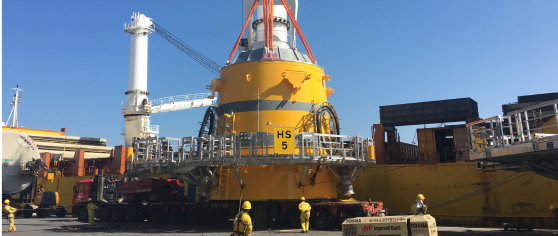
GET TO KNOW THE PROJECT
Discover the project phases and the role played by each participant

The SEAPOWER project chiefly aims to promote collaborative research and development integrating technologies, components and solutions for offshore fixed and floating structures, towers and auxiliary systems, for the next generation of high-power wind turbines.
The wind power sector benefits from greater cost reductions as a result of the growing size of wind turbines. In this respect, as the offshore alternative is not subject to the logistical constraints of onshore technology (with blade sizes almost impossible to transport by road), wind turbine manufacturers are immersed in a race to see who is capable of offering the market the most powerful marine turbine.

In turn, this upgrading generates different needs: from storing these increasingly larger turbines, to providing integrated solutions (fixed and floating structures, towers, transition parts), to address the technical-financial challenges which may arise, while guaranteeing performance of components and systems in hostile environments.
Wind turbines the height of the Eiffel Tower
Today, the leading manufacturers already have wind turbines such as the 9.5 MW V174 by MHI-VESTAS, the 10 MW SG 10.0 by Siemens Gamesa or even the Haliade X prototype by General Electric, which reaches 12 MW. To give you an idea, the latter is almost as tall as the Eiffel Tower. What's more, the sector expects to reach powers of between 13 and 15 MW per machine by 2025.

This huge increase in power and size of offshore wind turbines poses new challenges for the rest of wind farm elements, in terms of the structural nature, such as foundations (fixed or floating), transition part and tower, which are going to be subject to much higher loads, and electrical equipment for power evacuation.
Furthermore, all of this is in a harsh marine environment, subject to corrosion levels.
The Basque Country has the highest number companies in the wind sector value chain worldwide. These companies emerged as a result of the trailblazing effect generated by global leaders such as Iberdrola and Siemens Gamesa.
SEAPOWER started as a collaboration project among 9 Basque companies to address some of the main sector trends.
The Basque wind power sector is one of the European leaders in this field, comprising over 100 companies manufacturing many components and systems in the Basque Country which are directly affected by this trend.
Discover the project phases and the role played by each participant